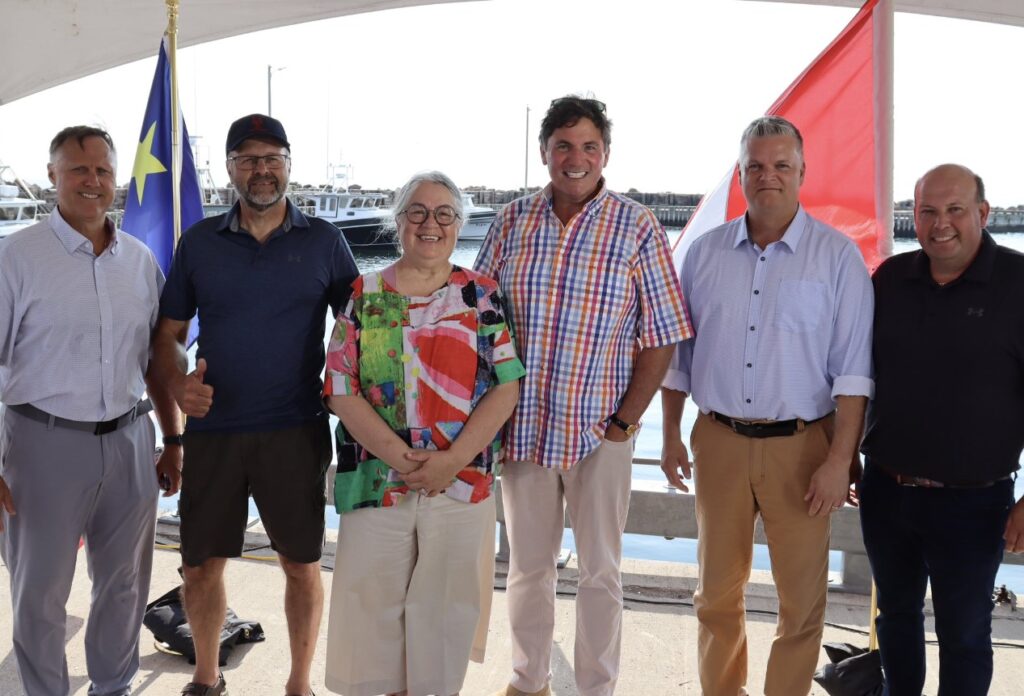Government’s Commitment to Economic Growth
Small craft harbours are essential to coastal communities, supporting both recreational and economic activities, and the fish and seafood industry, which employs over 45,000 Canadians. In the 2024 budget, the Canadian government has allocated $463.3 million over three years for the repair and maintenance of small craft harbours, including those impacted by Hurricane Fiona. This funding supplements the annual $90 million budget of Fisheries and Oceans Canada (DFO) for these harbours.
Reaffirming its commitment to economic growth and community support, the Government of Canada announced a $70-million investment over three years for the development of 18 small craft harbours in New Brunswick. This announcement was made by the Honourable Diane Lebouthillier, Minister of Fisheries, Oceans and the Canadian Coast Guard, and the Honourable Dominic LeBlanc, Minister of Public Safety, Democratic Institutions and Intergovernmental Affairs, at Cap-des-Caissie, one of the harbours receiving this funding.
Improvements at Cap-des-Caissie Harbour
Cap-des-Caissie will receive significant upgrades over the next three years, including a new wharf, enhanced armourstone protection, basin dredging, and improvements to the containment cell that holds dredged sediment. These enhancements aim to provide safer and more efficient facilities for harbour users.
Addressing Damage from Hurricane Fiona
More than $23.5 million of the New Brunswick investment will be allocated to reconstruct and repair piers, breakwaters, and other critical harbour infrastructure at six harbours severely damaged by Hurricane Fiona. This funding is crucial for restoring and improving the resilience of these vital structures.
Importance of Small Craft Harbours to the Fishing Industry
The fishing industry is vital to numerous coastal communities across Canada. Reliable small craft harbours are essential for harvesters, and given the increasing frequency of extreme weather events due to climate change, investing in resilient and safe harbour infrastructure is imperative. These investments will drive local economic development for future generations, ensuring operational harbours for Canadians working in fisheries, aquaculture, construction, and marine engineering sectors.
Quick Facts About Small Craft Harbours
Economic Impact
- Small craft harbours are essential for the commercial fishing industry, which had landings valued at nearly $4.7 billion in 2022.
- Over 45,000 jobs within the Canadian commercial fishing industry depend on small craft harbours, along with thousands of additional jobs in supporting industries.
DFO’s Role and Responsibilities
- DFO maintains 949 harbours critical to the commercial fishing industry, ensuring they remain open and well-maintained.
- Harbour restoration projects are conducted in partnership with local harbour authorities, which are incorporated, not-for-profit organizations managing and operating facilities for local users. There are over 5,000 volunteers in harbour authorities across Canada.
Benefits of Investing in Harbour Infrastructure
Investing in the repair and maintenance of small craft harbours ensures that these vital facilities remain operational and safe, supporting the local economy and providing essential infrastructure for the fishing and seafood industry. These efforts also contribute to the resilience of coastal communities against the impacts of climate change and extreme weather events.
Conclusion
The Canadian government’s $70-million investment in New Brunswick’s small craft harbours is a testament to its commitment to economic growth, community support, and resilience against climate change. By enhancing these critical infrastructures, the government ensures that coastal communities and the fishing industry can thrive for generations to come.
